Auxiliary storage devices provide a critical function in the realm of computing by offering a way to retain data over long periods, even when a device is powered off. These devices, which encompass options like hard drives, solid-state drives, and optical media, handle the essential task of storing users’ information that exceeds what the primary memory can accommodate. Auxiliary storage is accessible to the system’s CPU through various input/output channels, making it a key component of a well-rounded computer architecture.
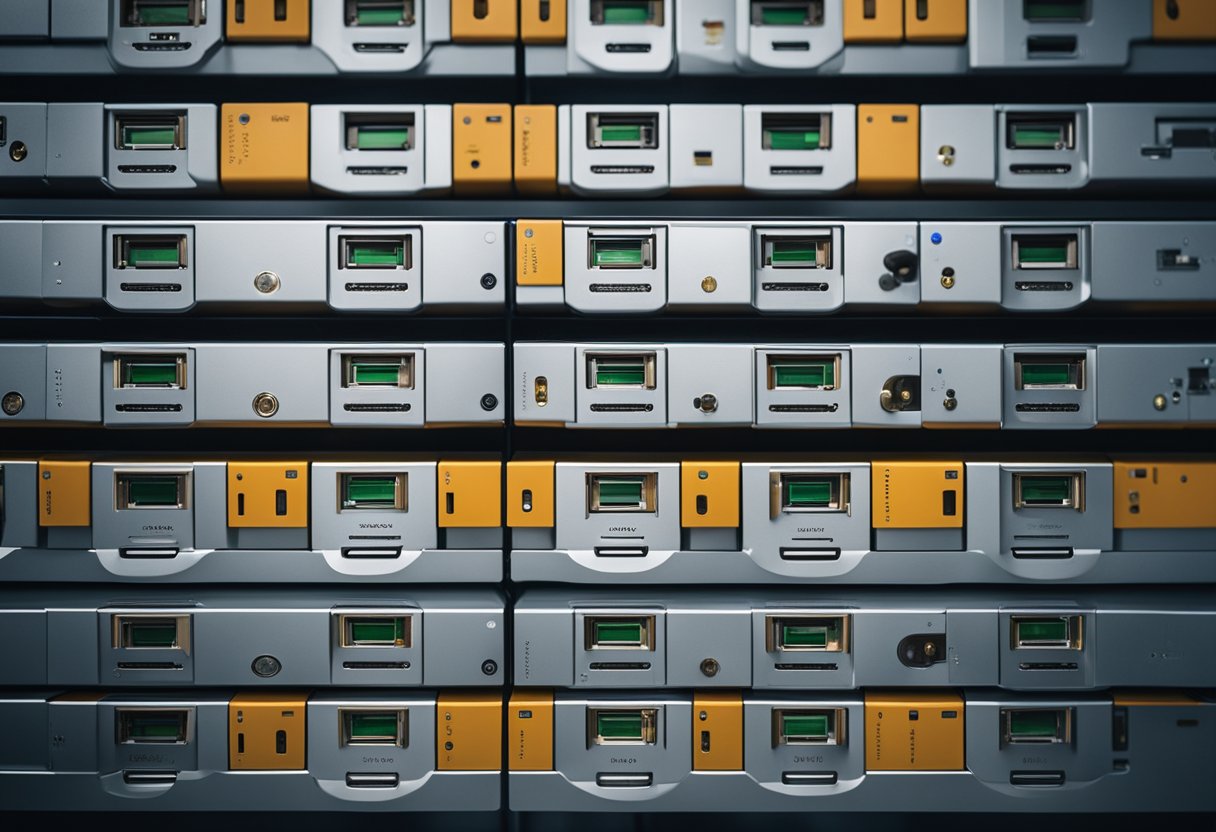
While the primary memory such as RAM is volatile and only holds data temporarily, auxiliary storage excels in capacity and persistence, safely keeping vast amounts of data until needed. This separation of volatile and nonvolatile memory allows computers to process data efficiently without sacrificing the ability to store inactive programs and possibly vast archives which can be accessed as needed.
Key Takeaways
- Auxiliary storage devices ensure data persistence beyond power cycles.
- They supplement primary memory by accommodating larger data volumes.
- These devices are integral for data archiving and accessibility.
Understanding Auxiliary Storage
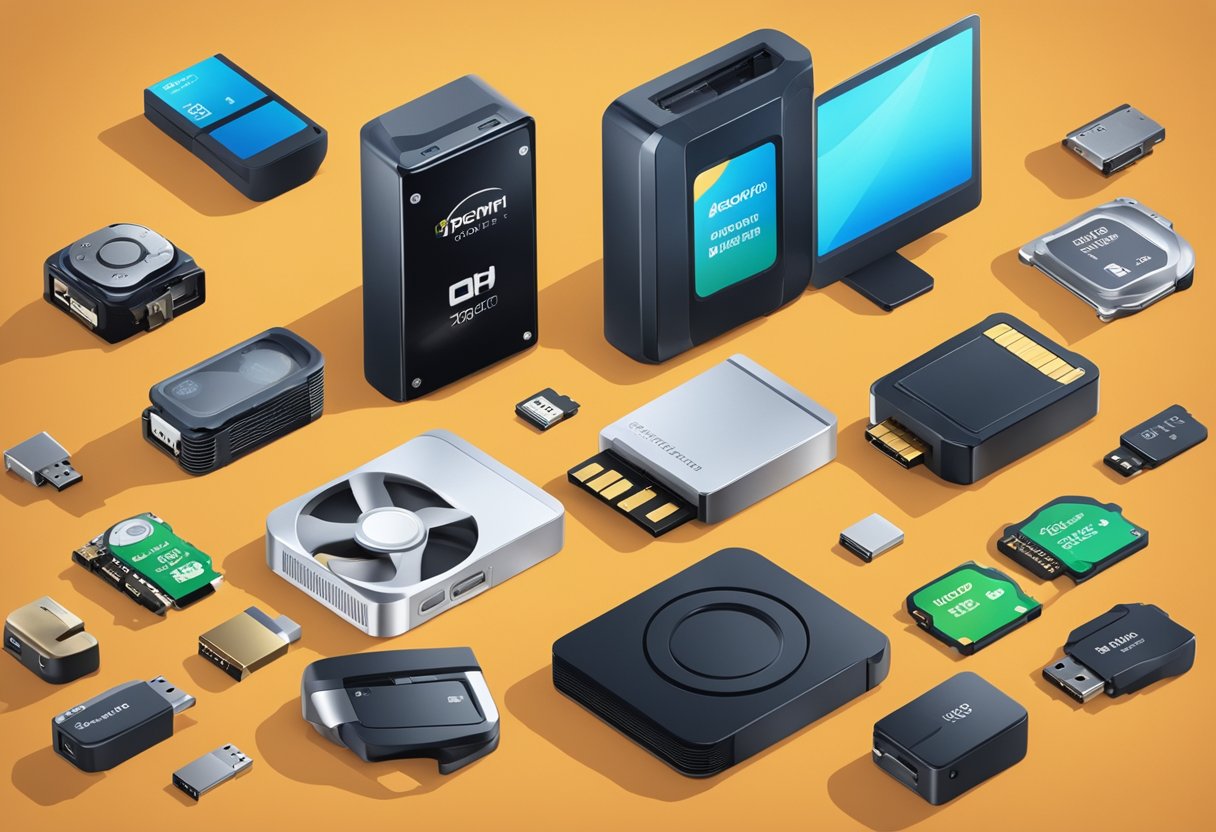
Auxiliary storage plays a pivotal role in expanding a computer’s data retention capabilities beyond the limitations of primary memory. It encompasses a range of devices and technologies, each with distinct functions and advantages.
Definition and Basic Concepts
Auxiliary storage, also known as secondary storage, refers to nonvolatile storage solutions that maintain data persistence even when a device is powered off. Unlike primary storage, which is directly accessible by the CPU and includes temporary storage mechanisms like RAM, auxiliary storage is used for long-term data retention. Secondary storage devices are crucial for backing up information and handling large quantities of data that exceed the capacity of primary memory.
Types of Auxiliary Storage Devices
Secondary storage can be found in several forms:
- Magnetic tape: An early form of secondary storage, magnetic tape is still used for mass storage and archiving due to its cost-effectiveness and high capacity.
- Optical storage: These devices, such as CDs and DVDs, leverage lasers to read and write data and are commonly employed for media distribution and data backup.
- Cloud storage: A remote storage solution that allows data to be stored on internet servers, offering scalability and accessibility from any location.
- External storage: This broad category includes any storage device that can be connected externally to a system, like USB drives and external hard drives.
Comparing Auxiliary and Primary Storage
While primary storage is essential for a computer’s active operations, auxiliary storage serves different functions:
- Capacity: Auxiliary storage devices typically boast larger storage capacities compared to primary memory.
- Persistence: Being nonvolatile, these devices retain information without a power source, in contrast to primary storage which is volatile and loses data when powered down.
- Speed: Primary storage is faster, allowing the CPU rapid access to data. Auxiliary storage is slower but compensates with its higher storage capabilities.
- Physical form: Auxiliary storage often comes in the form of external or secondary storage devices that are not directly housed within the computer’s main structure.
By utilizing both primary and auxiliary storage, computer systems achieve a balance between speed, volatility, and capacity, ensuring efficient data management and retrieval.
Roles of Auxiliary Storage
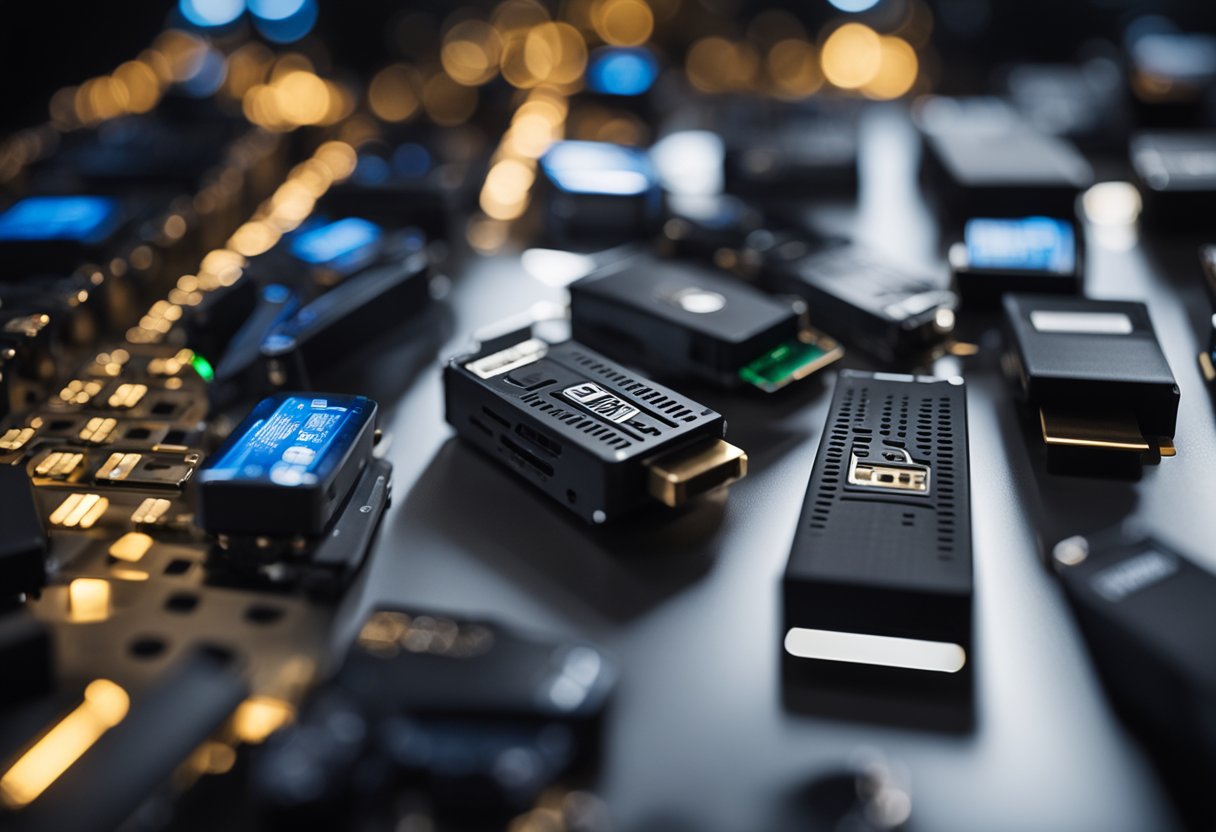
Auxiliary storage devices fulfill a variety of roles that are crucial for managing a computer’s data beyond its primary storage capabilities.
Expanded Storage Capacity
Auxiliary storage significantly increases storage capacity for computer systems. These devices, which are often external storage devices, serve as additional space for data that the main memory cannot hold. This can include large multimedia files, extensive databases, and applications not in regular use, ensuring the primary storage is not overwhelmed.
Data Accessibility and Portability
Auxiliary storage enhances data accessibility and facilitates portability. Devices such as USB flash drives and external hard drives allow users to carry data with them, making it possible to access information across different devices or share it with others. Portable storage devices are particularly useful for people who work in multiple locations or need to present information at different sites.
Backup and Data Security
Data backup is another essential function of auxiliary storage, offering a layer of data protection. Regular backups to an auxiliary storage device can prevent the loss of critical information in case of system failure or cyber-attacks. Backup data can be stored on various media, like tape drives or cloud-based storage, providing robust data security and quick recovery options.
Technologies Behind Auxiliary Storage
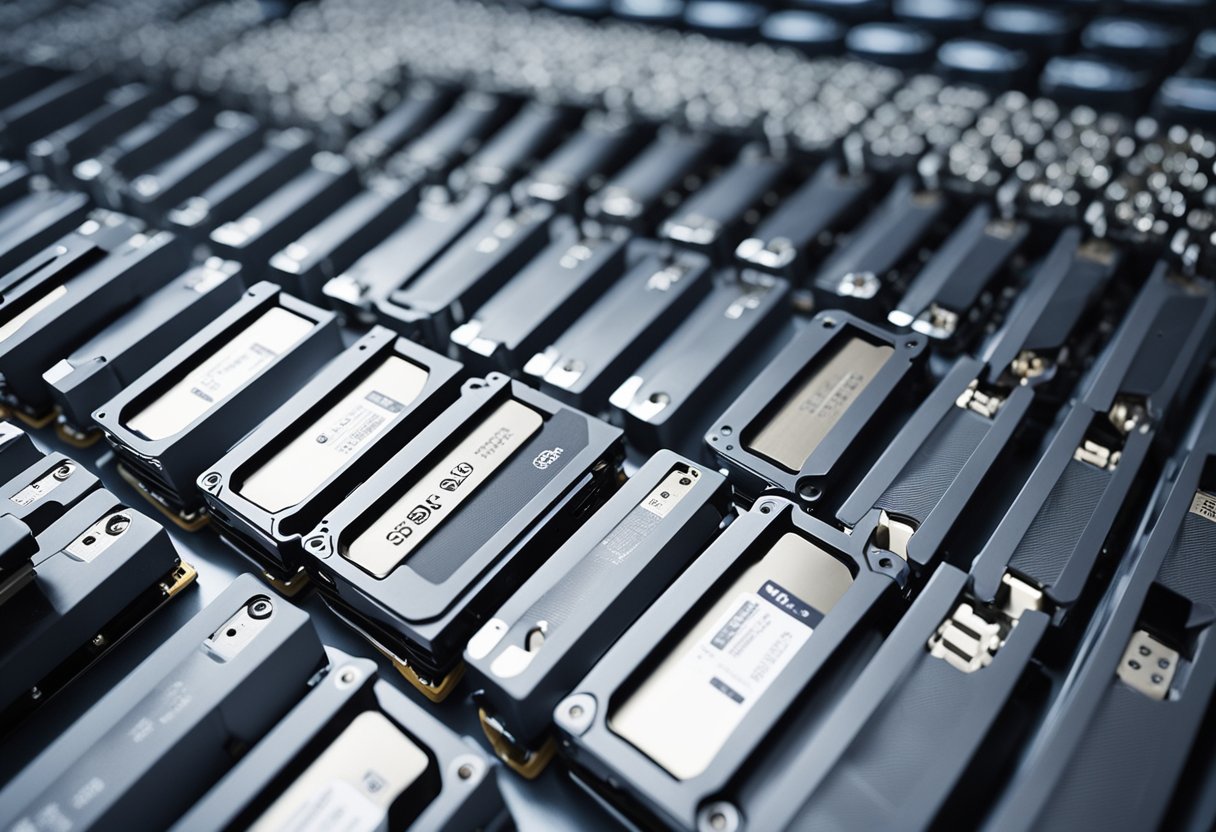
Auxiliary storage technologies are diverse, each with unique features and use-cases. They allow for the storage and retrieval of data separate from a computer’s main memory.
Magnetic Storage Solutions
Hard disk drives (HDDs) stand as a cornerstone of magnetic storage, providing substantial storage capacity for both personal and enterprise use. They function using a magnetic head that moves across rotating platters to read and write data. In addition to HDDs, magnetic tape systems, like tape drives, offer economical long-term storage options and are often used for backups and archiving due to their durability and high capacity.
Optical Storage Media
Optical storage devices use lasers to read and write data on optical discs. This category includes CD-ROMs, which are read-only, CD-Rs and CD-RWs which can be written to once or multiple times respectively, as well as DVDs and Blu-ray discs, known for their increased storage capacity compared to CDs.
Solid-State Drives and Flash Memory
Unlike HDDs, solid-state drives (SSDs) store data on flash memory chips, offering faster data access speeds and resistance to physical shock. Similarly, USB flash drives provide portable storage capabilities, with no moving parts and swift data transfer, which make them ideal for transporting data between devices.
Cloud-Based Storage Options
Cloud storage represents a shift from physical storage devices to internet-based servers. This technology allows for data storage and access across multiple platforms and devices, relying on networking and virtualization technologies to provide scalability and redundancy for personal and businesses users alike.
Implementing Auxiliary Storage
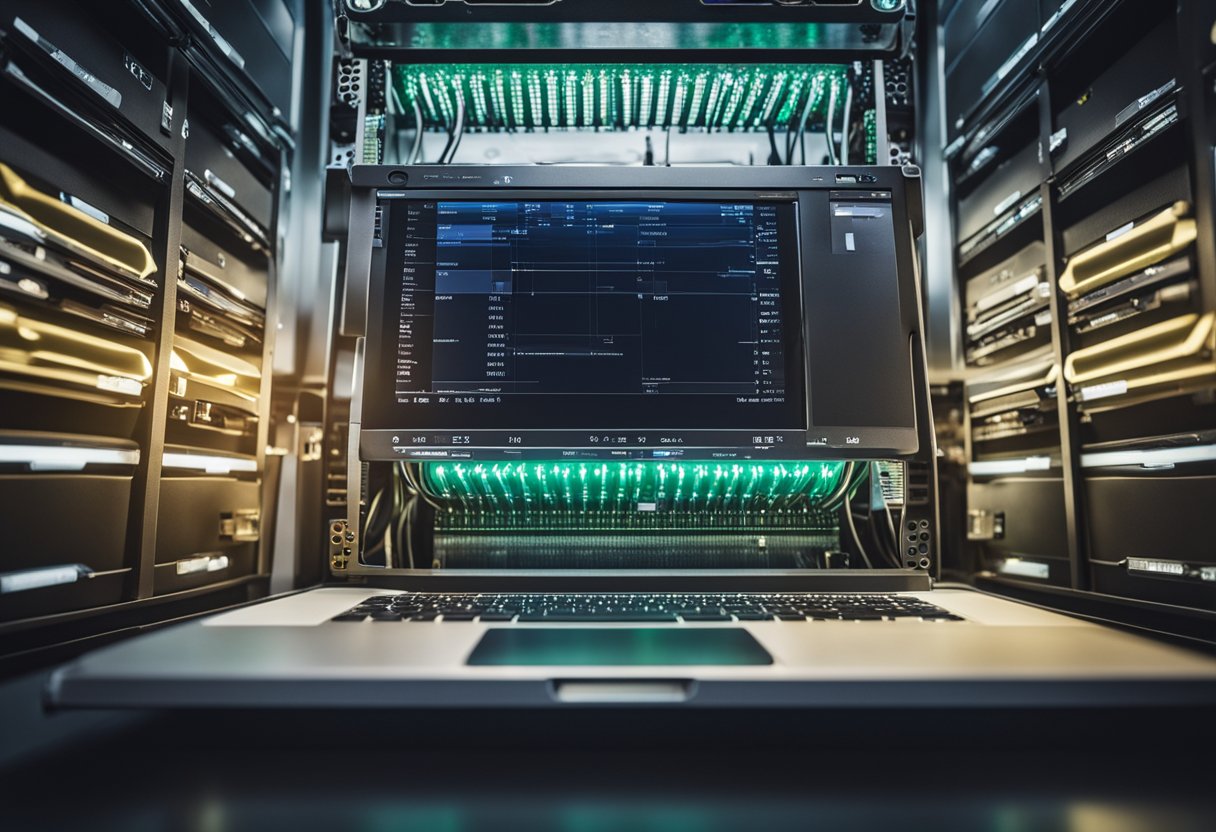
When implementing auxiliary storage devices, critical considerations include ensuring compatibility with existing technology and optimizing for performance and data management. This involves selecting the right storage capacity and technology, integrating with computing systems for seamless operation with RAM and CPU, and factoring in maintenance and security for reliable data access.
Choosing the Right Storage Device
Selecting the appropriate auxiliary storage device is paramount. Users should consider the storage capacity required, the technology behind the storage device—which could range from magnetic tapes to modern solid-state drives—and the device’s compatibility with the operating system and applications. For instance, server environments may need high-capacity drives to handle large databases efficiently.
Integration with Computing Systems
Proper integration with the computing system ensures that the auxiliary storage serves as an effective extension to the system’s memory. This includes synchronizing with the processor and RAM to optimize data retrieval and storage speeds. It’s essential for computer peripheral equipment like external memory or auxiliary memory units to be readily accessible without overloading the system’s CPU.
Maintenance and Upgrades
Maintaining auxiliary storage involves regular checks for efficiency and safeguarding against possible security threats. Upgrades may be necessary to enhance storage technology as new advancements become available or as demand for data storage grows. For example, a company dealing with an increasing amount of data management tasks may upgrade its auxiliary storage to faster, larger-capacity devices to keep pace with its needs.
By focusing on these three key areas, organizations can ensure their auxiliary storage devices are well-chosen, effectively integrated, and maintained to support their ongoing data storage requirements.
Use Cases of Auxiliary Storage
Auxiliary storage devices serve as crucial components for various data management tasks. They provide a reliable way to store large volumes of data, which is essential for both personal and business use, entertainment purposes, and the long-term preservation of digital information.
Personal and Business Applications
For individuals and enterprises, auxiliary storage is indispensable for handling documents, services, and applications. These devices allow users to store critical files such as business reports, financial spreadsheets, and personal records. They are essential for businesses that generate large volumes of data, enabling efficient access and management of resources. Additionally, auxiliary storage facilitates the execution of various applications, ensuring that primary storage is not overwhelmed.
- Documents: Secure storage of personal and commercial documents.
- Applications: Running resource-intensive programs without overloading system memory.
Entertainment and Multimedia
In the domain of entertainment and multimedia, auxiliary storage devices are used to store and play various media formats. From high-definition images to expansive digital video libraries, these storage options are key for both casual users and media professionals. They make it possible to access vast collections of multimedia without impacting the performance of the primary system storage.
- Multimedia: Storage of music, videos, photos, and games.
- Entertainment Systems: Integration with gaming consoles and home theater setups.
Archiving and Historical Data Preservation
Archiving and the preservation of historical data are perhaps the most significant roles of auxiliary storage. This includes secure archive data repositories and the ability to maintain inactive programs. For libraries, research institutions, and archives, auxiliary storage is vital as it provides a non-volatile solution to keep historical and archival data safe and accessible for the long term.
- Archiving: Storing important records and data for future retrieval.
- Historical Data Preservation: Keeping digital history intact for research and educational purposes.
Advantages and Limitations
Auxiliary storage devices offer benefits regarding cost-effectiveness and storage stability, yet they present some challenges including access speed and physical size. Understanding these factors is critical when considering storage solutions.
Pros of Auxiliary Storage
Greater Storage Capacity: Auxiliary storage devices like hard disks and RAID systems offer substantial space, enabling long-term storage of large volumes of data that volatile memory cannot handle due to size constraints.
- Cost-Effective: Many forms of auxiliary storage, such as DVDs and external HDDs, are relatively cheap, especially when considering the cost per gigabyte of storage.
- Removable and Portable: Devices like thumb drives and memory cards are compact, removable, and enhance portability, allowing users to transport data easily between different devices or locations.
- Data Stability: Unlike volatile memory that requires power to maintain data, auxiliary storage such as flash drives and SSDs provide nonvolatile memory, ensuring data stability even when not powered.
Cons of Auxiliary Storage
Slower Access Rates: Auxiliary storage devices generally have slower access rates compared to primary storage, which can lead to longer wait times when retrieving data.
- Physical Size Limitations: While portability is a benefit, the physical size of devices such as external HDDs or RAID boxes can be a limitation, requiring additional space and often external power sources.
- Security Risks: Removable storage devices, such as thumb drives and memory cards, can pose security risks if lost or stolen, putting confidential data at potential risk of unauthorized access.
- Technology Limitations: Devices like magnetic tapes and punched cards are considered outdated, with newer technologies offering superior performance, capacity, and convenience.
Future of Auxiliary Storage
As technology evolves, auxiliary storage devices continuously adapt, incorporating advancements in data encryption and storage capacity to meet expanding needs for data security and accessibility.
Trends in Storage Technology
Cloud storage has become increasingly prominent, with services like Dropbox shifting the perception of auxiliary storage from physical external hard drives to virtual spaces. This trend is driven by the convenience and scalability that cloud services offer. In the server infrastructure domain, the adoption of all-flash arrays for auxiliary storage is accelerating, largely due to their improved performance over traditional hard drives. The overall capacity of auxiliary storage mediums, such as SSDs and USB flash drives, is also rising, allowing consumers and businesses alike to store vast amounts of data externally with greater ease.
Innovations on the Horizon
On the horizon, technology companies, including industry leaders like IBM, are focusing on object storage systems that provide highly scalable and durable storage solutions for handling the unstructured data common in big data applications. Innovations like snapshots and data encryption are likely to become standard features in future auxiliary storage devices, enhancing their functionality as reliable backup solutions. The increase in USB port speeds and the imminent widespread adoption of USB protocols hint at even faster flash drives capable of near-instantaneous data transfer rates.
Frequently Asked Questions
Auxiliary storage devices are integral to extending a computer’s memory capabilities and protecting data. They provide non-volatile solutions for storing large amounts of information that are not in direct use by the central processing unit (CPU).
What are the primary functions of secondary storage devices?
Secondary storage devices offer permanent data storage and backup solutions, complementing a computer’s primary memory with enhanced storage capacity and retention characteristics. These devices ensure that data remains intact even when the system is powered off.
How do auxiliary storage devices differ from internal memory in computers?
Unlike internal memory such as RAM, auxiliary storage devices are not directly accessed by the CPU. They deliver long-term data storage, whereas the computer’s internal memory provides temporary data storage for rapid access and processing by the computer’s CPU.
Can you list common examples of auxiliary storage devices?
Common examples of auxiliary storage devices include external hard drives, solid-state drives (SSDs), USB flash drives, optical discs, and tape drives. These devices can be internal or external to the computer system.
In what ways do auxiliary storage devices enhance computer performance?
Auxiliary storage devices minimize data loss risks and expand available storage, allowing for more efficient data management and better performance. They enable computers to store more applications and files than what the internal memory can typically hold.
What makes RAM distinct from auxiliary or secondary storage?
RAM is a type of volatile memory used for the temporary storage of information that the CPU needs immediate access to. In contrast, auxiliary storage is non-volatile, maintaining stored data without power and serving as a long-term data repository.
How do auxiliary devices contribute to the overall electrical system of a computer?
While auxiliary storage devices require electrical power to operate, they are crucial in reducing the load on the computer’s primary electrical system by handling data storage externally, allowing the electrical system to focus on powering the CPU and other immediate processing tasks.

